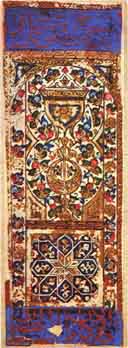Card game
A card game is any game using playing cards as the primary device with which the game is played, be they traditional or game-specific.
Countless card games exist, including families of related games (such as poker). A small number of card games played with traditional decks have formally standardized rules with international tournaments being held, but most are folk games whose rules vary by region, culture, and person.
Traditional card games are played with a deck or pack of playing cards which are identical in size and shape. Each card has two sides, the face and the back. Normally the backs of the cards are indistinguishable. The faces of the cards may all be unique, or there can be duplicates. The composition of a deck is known to each player. In some cases several decks are shuffled together to form a single pack or shoe. Modern card games usually have bespoke decks, often with a vast amount of cards, and can include number or action cards. This type of game is generally regarded as part of the board game hobby.
Games using playing cards exploit the fact that cards are individually identifiable from one side only, so that each player knows only the cards they hold and not those held by anyone else. For this reason card games are often characterized as games of chance or "imperfect information"—as distinct from games of strategy or perfect information, where the current position is fully visible to all players throughout the game.[1] Many games that are not generally placed in the family of card games do in fact use cards for some aspect of their gameplay.
Some games that are placed in the card game genre involve a board. The distinction is that the gameplay of a card game chiefly depends on the use of the cards by players (the board is simply a guide for scorekeeping or for card placement), while board games (the principal non-card game genre to use cards) generally focus on the players' positions on the board, and use the cards for some secondary purpose.
The object of a trick-taking game is based on the play of multiple rounds, or tricks, in each of which each player plays a single card from their hand, and based on the values of played cards one player wins or "takes" the trick. The specific object varies with each game and can include taking as many tricks as possible, taking as many scoring cards within the tricks won as possible, taking as few tricks (or as few penalty cards) as possible, taking a particular trick in the hand, or taking an exact number of tricks. Bridge, Whist and Spades, and the various Tarot card games, are popular examples.



_in_Croatia.2.jpg/440px-Preferans_(card_game)_in_Croatia.2.jpg)
,_60_x_73_cm,_oil_on_canvas,_Courtauld_Institute_of_Art,_London.jpg/440px-Paul_Cézanne,_1892-95,_Les_joueurs_de_carte_(The_Card_Players),_60_x_73_cm,_oil_on_canvas,_Courtauld_Institute_of_Art,_London.jpg)

